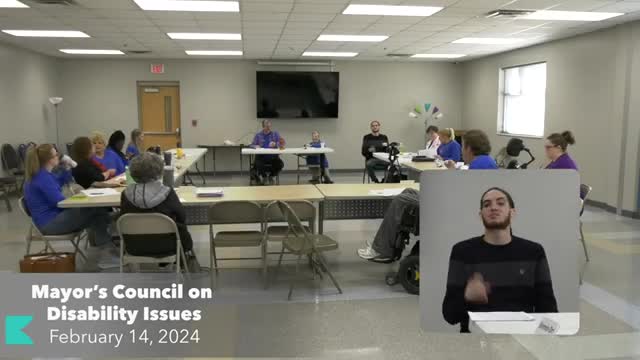Community rallies to aid vulnerable during severe winter storm
February 14, 2024 | Mayor's Council on Disability Issues, Knoxville City, Knox County, Tennessee

This article was created by AI summarizing key points discussed. AI makes mistakes, so for full details and context, please refer to the video of the full meeting. Please report any errors so we can fix them. Report an error »

In a recent government meeting, officials discussed the significant impact of a January weather event that brought unexpected snowfall, prompting a review of emergency preparedness and response strategies. Participants shared personal experiences of the storm, with snowfall ranging from a quarter inch to over eight inches, and reflected on the challenges faced by the community.
The meeting highlighted the collaboration between local agencies, including the health department, emergency services, and disability organizations, to enhance emergency response capabilities. A notable initiative discussed was the development of a \"safe trailer\" equipped with mobility aids for individuals with disabilities, ensuring they can be evacuated or sheltered during emergencies.
Officials emphasized the importance of personal emergency preparedness, urging residents to maintain adequate supplies of food, medications, and other essentials. The meeting underscored the need for a robust informational campaign to educate the public on disaster preparedness, particularly for vulnerable populations such as those reliant on regular medical treatments like dialysis.
The discussions also revealed the strain on emergency services during the storm, with quick response vehicles (QRVs) deployed to assist stranded ambulances and deliver critical supplies to those in need. The community's response was commendable, with many citizens stepping up to help their neighbors during the crisis.
Tragic incidents were noted, including fatalities due to hypothermia and individuals living alone who were unable to seek help. This highlighted the necessity for community vigilance and support systems, especially during severe weather events.
In conclusion, the meeting served as a crucial platform for evaluating the response to the January weather event, identifying lessons learned, and reinforcing the importance of preparedness and community cooperation in facing future emergencies.
The meeting highlighted the collaboration between local agencies, including the health department, emergency services, and disability organizations, to enhance emergency response capabilities. A notable initiative discussed was the development of a \"safe trailer\" equipped with mobility aids for individuals with disabilities, ensuring they can be evacuated or sheltered during emergencies.
Officials emphasized the importance of personal emergency preparedness, urging residents to maintain adequate supplies of food, medications, and other essentials. The meeting underscored the need for a robust informational campaign to educate the public on disaster preparedness, particularly for vulnerable populations such as those reliant on regular medical treatments like dialysis.
The discussions also revealed the strain on emergency services during the storm, with quick response vehicles (QRVs) deployed to assist stranded ambulances and deliver critical supplies to those in need. The community's response was commendable, with many citizens stepping up to help their neighbors during the crisis.
Tragic incidents were noted, including fatalities due to hypothermia and individuals living alone who were unable to seek help. This highlighted the necessity for community vigilance and support systems, especially during severe weather events.
In conclusion, the meeting served as a crucial platform for evaluating the response to the January weather event, identifying lessons learned, and reinforcing the importance of preparedness and community cooperation in facing future emergencies.
View full meeting
This article is based on a recent meeting—watch the full video and explore the complete transcript for deeper insights into the discussion.
View full meeting
